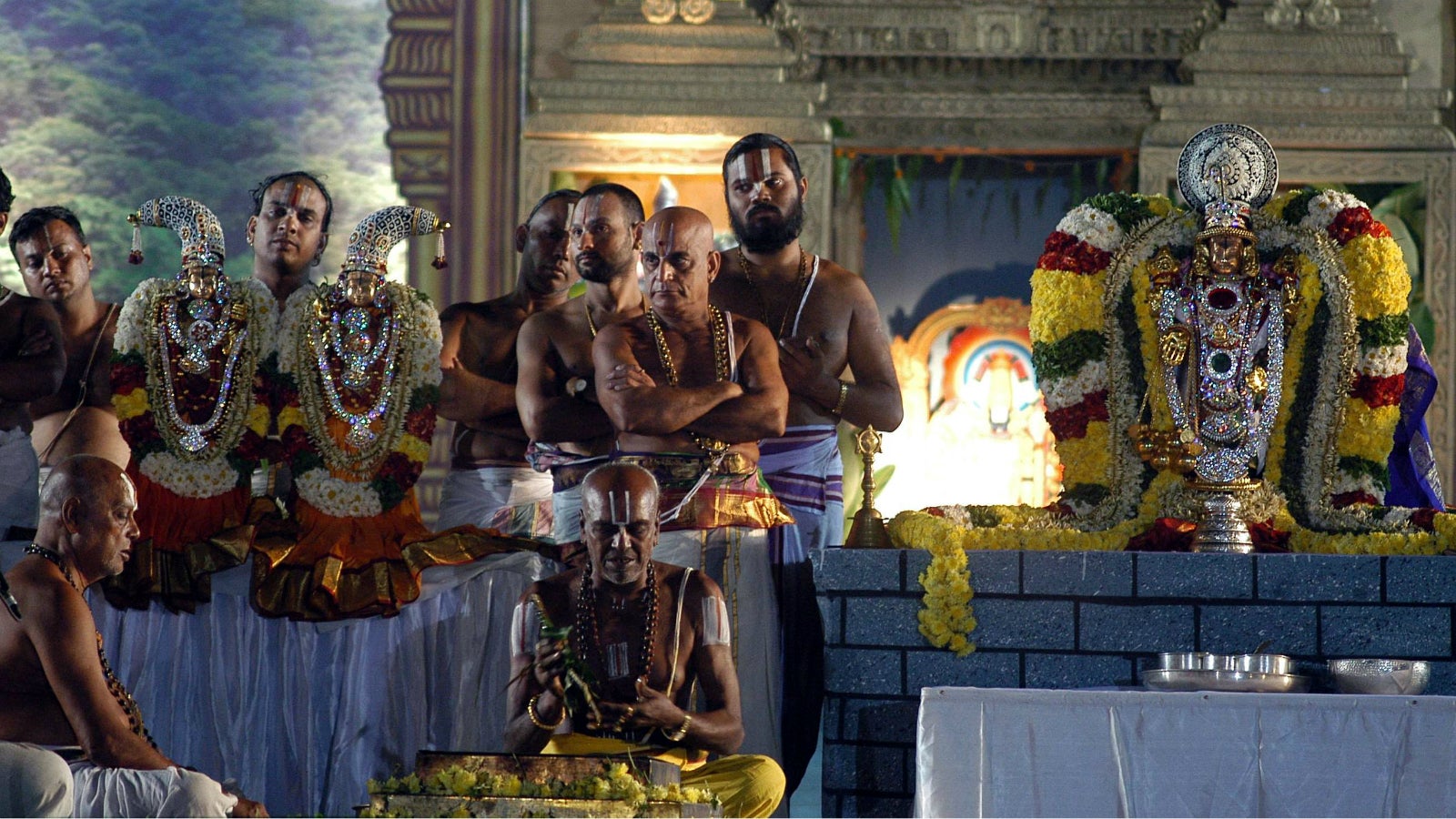Where faith, devotion, and management skills converge: Lord Balaji’s abode at Tirumala
For thousands of Hindu devotees from all over the world, a pilgrimage to Tirupati, the temple town in Andhra Pradesh, is an essential rite of passage. Dedicated to the god Venkateswara, also known as Balaji, the Tirumala Tirupati Devasthanams (TTD) has transformed the hill town into a bustling centre where faith and divinity merge riotously.


For thousands of Hindu devotees from all over the world, a pilgrimage to Tirupati, the temple town in Andhra Pradesh, is an essential rite of passage. Dedicated to the god Venkateswara, also known as Balaji, the Tirumala Tirupati Devasthanams (TTD) has transformed the hill town into a bustling centre where faith and divinity merge riotously.
The National Geographic documentary Inside Tirupati Tirumala (it will be screened on March 27 at 9pm) explores how the TTD became a pre-eminent pilgrimage site. Built over 1,700 years ago, the sanctum sanctorum has been preserved in its original form over the centuries, bolstering the legend that its presiding deity, an incarnation of Vishnu, will live there unperturbed through the duration of the Kali Yug.
The 45-minute documentary serves twin functions. On the one hand, it captures the unrelenting joy of devotees who make great efforts to endear themselves to the god. Disregarding the well-paved road that leads from the town to the shrine, most devotees make the arduous nine-kilometre climb, often on their knees, to seek the lord’s blessings. “The lord has been with me throughout my life,” an old man, says soulfully, before breaking down in submission.
The documentary’s chief focus, though, is on the running of the shrine, an updated process that liberally uses technology to cater to devotees who number between 50,000 to 70,000 on normal days and over a lakh on special occasions such as the Brahmotsavam. Even as the numbers visiting the shrine have soared, the temple’s architecture has not been altered. Consequently, there remains a single entry and exit point to the garbha griha.
This presents great challenges to the administrators, not just from an operational viewpoint but also for security reasons. The TTD has streamlined every part of the process, including registering devotees, directing them to the sanctum sanctorum and offering them the famed prasadam and free meals. In this regard, the temple trust is not unlike a mid-sized organisation, employing thousands of people, from the priests at the top of the hierarchy to the volunteers on the ground to the security staff who maintain round-the-clock vigil.
The documentary, perhaps given its remit, overlooks the less savoury elements of the trust, such as the scandal, unearthed in 2010, involving the sale of tickets to special ceremonies to powerful people on the black market. The matter came to light when a clerk employed with the trust committed suicide, prompting the Andhra Pradesh government to hand over its running to Indian Administrative Service functionaries. In recent years, the trust has also been plagued with allegations of not paying employees well.
Yet, such is the pull of Balaji that any scandal is soon forgotten as devotees line up to catch that elusive glimpse of great healing power. The people deputed to manage Balaji’s abode may not be immune to the pulls of the era that he presides over, but the lord looks on benevolently nonetheless, offering solace and succor to those who visit him.
This post first appeared on Scroll.in. We welcome your comments at [email protected].